Reducing the bees' nest in spring
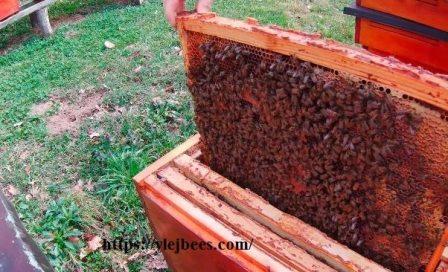
In the spring, many beekeepers traditionally reduce the bee nest. Let's consider the various nuances of reducing the bees' nest in the spring, what to pay special attention to.
Content
- At what time should bees' nests be reduced in spring?
- Why reduce bees' nests in spring?
- How to carry out spring reduction of a bee nest
- What frames are taken away when a bee's nest is reduced?
At what time should bees' nests be reduced in spring?
Traditionally, the spring reduction of the bee nest is carried out after the first spring flight, when the first cursory inspection of the bee colonies is carried out. It doesn’t matter whether there is snow on the point or the grass is green, there is no frost, it’s sunny and there is no wind, everything can be quickly inspected and nests can be reduced. If you do everything quickly and correctly, the nest will not cool down too much, and the benefits will outweigh the possible negatives.
Why reduce bees' nests in spring?
Some beekeepers use beekeeping techniques that do not involve reducing the bees' nest, but most beekeepers use this technique successfully. It is carried out because there were losses of bees over the winter and in order for the bees to develop quickly in the spring, they need warmth in the nest, and this is easier to do when the nest is small, which the bees closely infest. Do not forget that despite the spring flyover, the weather remains cold for a long time, with strong negative temperatures at night. In this case, if you do not reduce the nest of bees in the spring, you can get not only slow development of colonies, but also an outbreak of ascospherosis, cold brood and many other diseases of bees, which then will have to be dealt with. It is better to reduce the bees' nest and insulate it. Do not forget that in the spring there will still be losses of bees during bad weather. For example, a carpathian can lose up to 25% of a flying bee in the spring when flying out in bad weather for nectar, pollen and especially water; when a bee takes up cold water in bad weather, it often freezes. This reduces the number of bees in the nest.
How to carry out spring reduction of a bee nest
Each beekeeper has his own opinion on how to reduce a bee nest in the spring, which is primarily based on his habits and then depends on the area and other factors. Traditionally, frames that are not inhabited by bees are taken from the hive.
Important!
It is not enough to simply lift the canvas and see where the bees are. By this time, the winter club breaks up and bees fill the entire nest space. Therefore, it is not worthwhile to visually estimate the number of bees without disassembling the nest, otherwise it will seem that there are more bees than there actually are. It is necessary to take out several frames, assessing the number of bees, as well as the condition of the families. It is worth taking away the extra frames from the nest.
What frames are taken away when a bee's nest is reduced?
The beekeeper, while reducing the nest from the bees, takes away empty frames, as well as frames with mold, and at the same time replenishes food in the nest. But still, how many and what kind of frames should you take from the bees’ nest?
If the bees have had a good winter, then, as a rule, they take one or two frames; if the bees have a bad winter, they will have to take more frames.
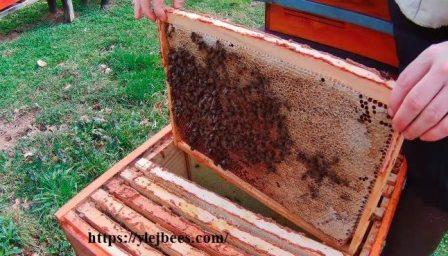
As you can see in the photo, there are few bees on the frame; one frame is definitely worth taking from the hive.
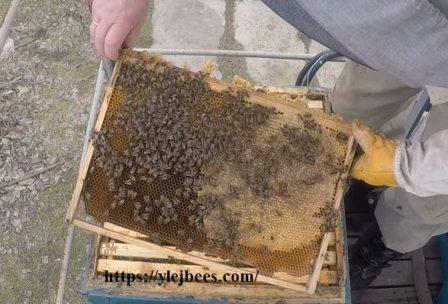
Most often, the frames will show something like this: the bees have eaten half a frame of honey and they themselves have eaten about half a frame of bees.
One frame is extra, but which one should I take? This frame is typical for families wintering in the southern regions, where the fly-free period is not long and the bees have enough food.
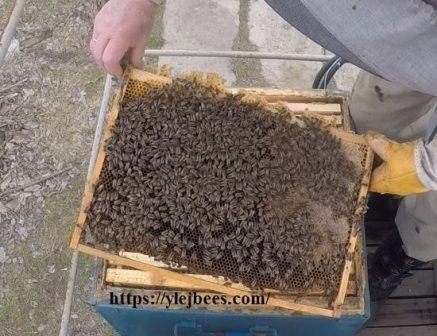
It is considered excellent if there are about this many bees on the frame, in which case they can properly heat the brood.
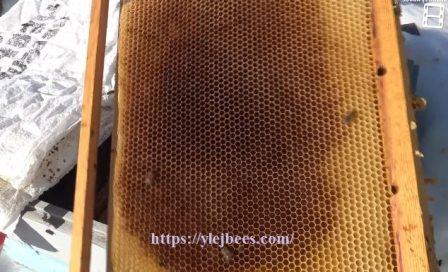
Look for a frame that has no or very little honey left. The bees in the nest don’t need a frame like the one in the photo and they take it away. Shake the bees off it into the hive and take it. This frame is typical for colonies wintering in northern regions, where the fly-free period is long and bees eat a lot of food.
But which frames should not be touched when reducing the bees’ nest?
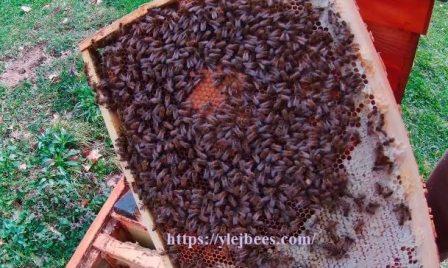
In February there is often brood in the hive; in the southern regions there will definitely be brood and, moreover, on many frames. Frames with brood should not be touched; they remain in the center of the nest.

Such a frame can be left in the nest if there is a lot of honey in it, but you can also take it away if there are a lot of such frames in the nest, just choose the lightest one in weight and shake the bees into the hive - as you can see there are very few bees on the frame and there is no brood. Don’t forget, you can feed the bees by placing a bag of honey or protein supplement on top of the frames, so feel free to take away the extra frames.
Many beekeepers have a question, especially if there are a lot of frames with brood patches, what to do with the feeding frame?
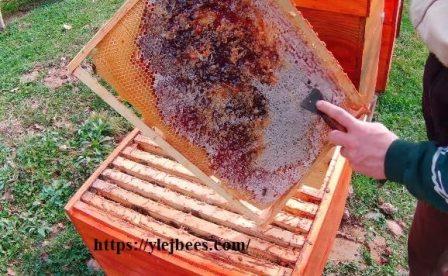
Photo print of the stern frame
Sometimes the feeding frame is unsealed and placed behind the guard board, as if the nest has been shortened and the bees will be able to take honey into the nest from behind the guard board. It should be taken into account that if the family is strong, then everything is fine, the bees will take the honey, but if the family is weak, then the honey can leak out of the cells and in early spring, while the bees are still weakly guarding their nest, this family can be plundered by bee thieves. In addition, it is advisable to insulate the bees; the feeding frame behind the outpost will interfere. Also, the feeding frame itself retains heat quite well, so it is better not to take it out of the nest. It is better to take the frame with half-eaten honey, but leave the stern one in the nest.
It is quite acceptable to move the feeding frame towards the brood. You can also do the following. A food frame is placed next to the frames with brood, and a low-copper frame is placed behind the food frame on the edge of the nest. During this period, the queen still lays few eggs, several hundred per day, so while the queen sows the honeycombs in the center, the bees will select honey from the feeding frame.
If the bees from the outer frame have eaten honey on one side, it is better to turn the frame with the side with honey towards the nest; it is easier for the bees to take the honey.
Remember, reducing the bees' nest in the spring will not work if the bees are not provided with food and are not insulated. Therefore, the best option is to remove the extra frames, move the frames in the center of the hive and limit it on both sides with warm guards, insulate the nest with a blanket or other insulating material, the nest will be covered with a blanket on three sides, having previously provided the bees with food. In this case, the bees will be able to create a comfortable temperature in the nest, which will ensure the feeding of brood and the growth of families in the spring.
Here are some simple techniques for reducing bee nests in the spring.
